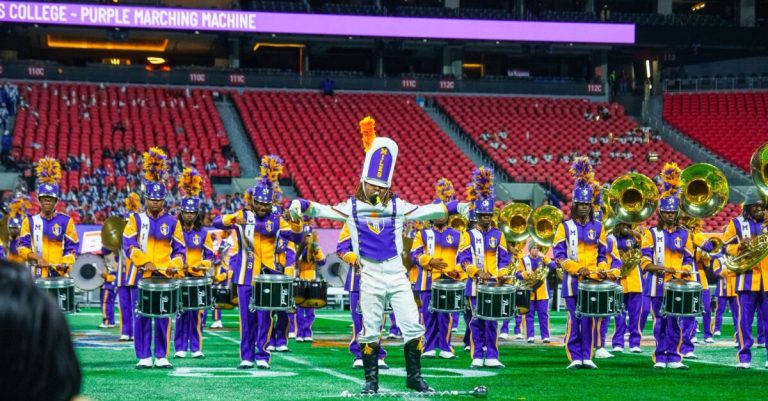Director Graham Boettcher has high hopes for the Birmingham Museum of Art
Reading time: 6 minutes

The Birmingham Museum of Art saw some changes to their staff this past September. After a six-month national search, the Board of Trustees of the Birmingham Museum of Art appointed Dr. Graham C. Boettcher as its new R. Hugh Daniel Director. Boettcher replaced Gail C. Andrews, who retired after 21 years of leadership and service to the BMA.

“Over the course of the interview process and indeed over the last decade of his service to the Birmingham Museum of Art, Graham has proven himself as a distinguished scholar of art history, a dedicated steward of our collection, and a highly-regarded community leader who is committed to realizing the mission and vision of our prized institution,” said James K. Outland, Chairman of the Board of Trustees. “We look forward to the possibilities his leadership will provide in elevating the Birmingham Museum of Art to even greater heights, as he builds on Gail Andrews’ incredible legacy.”

When Boettcher was offered the job, he took it with open arms.
“There was no doubt in my mind that if offered the job, I would accept it,” said Boettcher. “I love this museum and the city of Birmingham. It’s the people that make me want to stay. I have extraordinary and talented colleagues here, and couldn’t ask for a warmer or more supportive community.”
Boettcher was born in Bellingham, Washington, and raised in the Skagit Valley (almost halfway between Seattle and Vancouver, British Columbia.). After attending graduate school at Yale, he moved directly to Birmingham and received a postdoctural curatorial fellowship at the BMA. Though not originally from Birmingham, Boettcher says,
“My heart belongs to the Magic City.”
“When he came to Birmingham, he fully invested himself in the city,” said Cate McCusker Boehm, director of marketing and communications for the museum. “He fully believes in the city.”

Since living in Birmingham, Boettcher has worked at the BMA for over 11 years. During this time, he has held several positions, including Deputy Director (2016-2017), Chief Curator (2014-2016), The William Cary Hulsey Curator of American Art (2008-2017), and The Luce Foundation Curatorial Fellow of American Art (2006-2008).
With his new role as the R. Hugh Daniel Director, Boettcher has many hats to wear. Not only will he be in charge of ensuring the BMA achieves their internal and external goals and doesn’t drift from their mission to “spark the creativity, imagination, and liveliness of Birmingham by connecting all of its citizens to the experience, meaning and joy of art”, but he will also help with fundraising and cultivating support for the BMA. Boettcher has helped with fundraising for the BMA as vice president of finance for the Association of Art Museum Curators but will increase his fundraising presence as BMA’s director.
“I enjoy working with all the departments [at BMA],” said Boettcher, “but I also enjoy going after the resources that make thing possible for the institution.”
In keeping with this theme, the museum’s building has been a topic of conversation for some time. Currently, the institution’s permanent collection includes more than 27,000 pieces, but due to space limitations, only around 10 percent of these pieces are on display at a time.

Along with limited space, facility concerns have also increased due to the loss of nearby parking because of interstate construction. But for Boettcher, his top priority is to ensure the BMA’s existing building is cared for and modernized. He says that he does not know for certain that the institution will be moved to a new location, or when it will happen, but what he does know is,
“… you take care of the house you’re in. That needs to be a priority.”
Boettcher continued to say that he has plans and goals he wishes to bring to the BMA.
“Initially, I plan to bring increased attention and resources to making our building and its public amenities as user-friendly, accessible, and appealing as they possibly can be,” said Boettcher. “I’d like this place to really shine for our visitors.”
Currently, the BMA sees 120,000 visitors per year. Five years from now, Boettcher says he’d like that number to increase to 180,000.

“I want us to be among the first places people think of when deciding where to spend their free time,” said Boettcher. “…I think to achieve the growth we envision, we need to be viewed as a community gathering place where people come not only to look at art, but to experience other forms of creative expression ranging from film to dance, or even just to sit quietly in our Red Mountain Garden Club Memorial Garden while reading a book.”
Boettcher is especially proud of BMA’s rich collections that “never lose touch with where we live. You can travel the world throughout time in our galleries, but still see some of the most extraordinary things made in Alabama by Alabamians. I don’t ever want [the Birmingham Museum of Art] to lose sight of our local identity, and think we can have a collection of national significance that simultaneously celebrates the creativity of our city and state.”
What’s next for the Birmingham Museum of Art?

Currently, the BMA’s exhibition Third Space/shifting conversation about contemporary art was named the “Best Art of 2017” by the New York Times. The exhibit will be on view until January 2019.
In the coming year, the BMA will present Magic City Realism: Richard Coe’s Birmingham (opening March 24, 2018), which looks at an exceptional Selma-born artist working in Birmingham during the height of the Great Depression.
The BMA will also present The Original Makers: Folk Art from the Cargo Collection (opening June 17, 2018), which explores Alabama’s rich tradition of vivid and innovative work by self-taught artists.



